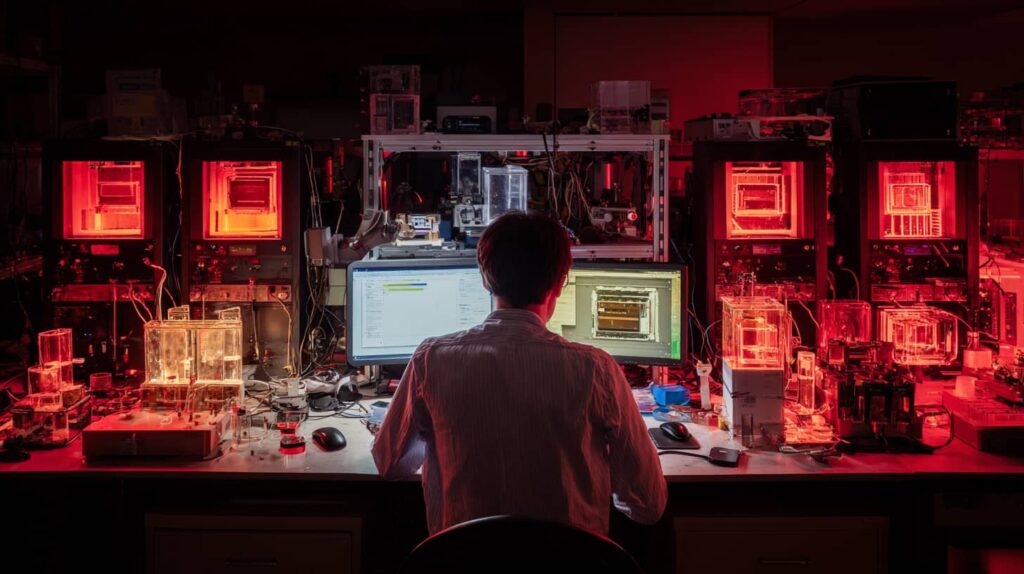One decade. 3,652 days. Over 50,000 prototype cocktails. What does it take to develop the perfect automatic cocktail machine? The answer lies in the story of an obsession with perfection.
From the first rough sketch to market-leading technology - a journey through time, dreams and countless setbacks.
2014: The moment of realisation
It started with frustration. A restaurateur was facing his third bartender cancellation in two months. Again no cocktails, again dissatisfied guests, again lost sales.
"There has to be a better way," he thought. The idea was simple: a machine that mixes perfect cocktails. The realisation turned out to be a mammoth task.
Year 1-2: Disillusionment - First prototypes failed completely - dosing inaccurate, flavour miserable - 47 different pump systems tested - findings: Zero, losses: High
2016: The first breakthrough
After countless failures, the turning point: the realisation that cocktails are more than just mixed liquids. Temperature, order, timing - everything is crucial.
Milestone moments: - Development of precise dosing technology - First successful mojito tests - Patent for the cooling technology - Investors take notice
One engineer remembers: "The day our mojito tasted perfect for the first time - that was magical. Three years of work and suddenly it worked."
2018: The quality obsession
Phase 3: Perfection in details
While competitors were looking for quick solutions, the team focussed on quality. Every component was tested hundreds of times:
| Component | Tests carried out | Improvements |
|---|---|---|
| Dosing system | 2.847 | 23 iterations |
| Cooling technology | 1.456 | 15 versions |
| Software | 5.234 | 67 Updates |
| Material tests | 923 | 12 Material change |
Findings from this phase: - There is no alternative to stainless steel for longevity - Software must be intuitive, not complex - Maintenance must take a maximum of 5 minutes - Speed possible without loss of quality
2020: Corona as a catalyst
The pandemic changed everything. Suddenly, restaurateurs were desperately looking for staff-independent solutions. The years of development work paid off.
The breakthrough: - First large orders despite lockdown - Hygiene benefits become a selling point - Contactless operation becomes standard - Sales increase by 400% within six months
2022: The scaling challenge
Success brings new problems: How do you produce thousands of machines with consistent quality?
Challenges mastered: - Establishment of own production line - Quality control for mass production - Training of 200+ technicians - Worldwide service infrastructure
Production milestones:
- 2022: 500 machines
- 2023: 2,000 machines
- 2024: 8,000 machines
- 2025: 15,000 machines (planned)
2024: Artificial intelligence revolutionises
The latest generation integrates AI: - Learns from every cocktail order - Optimises recipes based on guest feedback - Prediction of maintenance cycles - Automatic inventory management
One beta tester reported: "The machine knows which cocktails are in demand at 10 pm. It automatically prepares the right ingredients."
The lessons of a decade
What does perfection cost? - Development time: 10 years - Investment: 12 million euros Prototypes: 247 different versions - Tested cocktails: 53.247 - Experts involved: 89 Engineers, bartenders, designers
2025: Looking ahead
Today, 400 people are working on the next generation. The goal: cocktails that taste better than handmade ones. Utopia? After ten years of development, nobody believes it anymore.
The pipeline for 2025-2030: - Hologram garnish - flavour personalisation by DNA analysis
- Telepathic ordering systems - molecular cocktails from the machine
Ten years, one vision, endless iterations. The result: machines that mix perfect cocktails. The proof: sometimes genius simply takes time.
From sketch to perfection - a decade of obsession.
